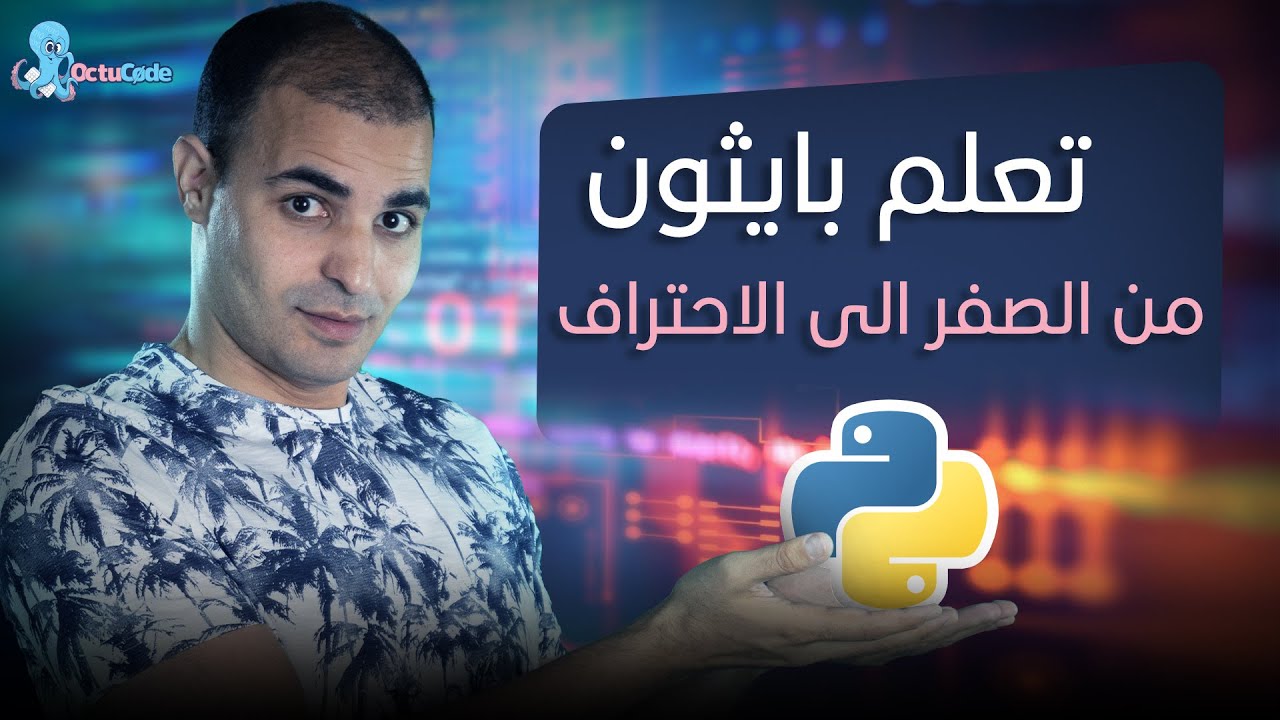Introduction to Python Programming | Python for Beginners #lec1
Summary
TLDRThis introductory Python course lecture highlights the language's popularity and versatility, tracing its origins back to 1989. Python's ease of use, wide-ranging applications in fields like machine learning, AI, and data science, and its ability to handle complex tasks with fewer lines of code are emphasized. The lecture also touches on Python's open-source nature, rich libraries, and the career opportunities it presents, with an average high salary range. The upcoming video promises to delve into Python's history and the reasons behind its name.
Takeaways
- 📚 Python is a popular and fast-growing programming language, known for its simplicity and wide range of applications.
- 🌟 Python was conceived in 1989, predating Java, and has gained significant popularity in recent years.
- 🤖 Main application areas of Python include machine learning, data science, artificial intelligence, and web development.
- 📈 Companies like Facebook, YouTube, and shopping websites use Python for managing and analyzing vast amounts of user data.
- 🛍️ Python plays a role in targeted advertising by analyzing user behavior and interests to display relevant ads.
- 🔧 Python is used across various domains including software development, testing, game development, and even hacking.
- 🏢 Big tech giants such as Google, YouTube, and Instagram utilize Python, either as a primary or supportive programming language.
- 👥 Python is favored by a diverse group of users, from researchers and scientists to software engineers and school students.
- 📝 Python's ease of learning and its ability to solve complex problems with fewer lines of code contribute to its popularity.
- 🧩 Python is a high-level, interpreted, multi-paradigm, and general-purpose language with automatic memory management.
- 📚 Being open-source, Python has a rich library of pre-built packages and modules, supported by a large community, which facilitates easy extension and contribution.
- 💼 There are abundant career opportunities for Python developers, with high average salaries, reflecting the language's demand in the job market.
Q & A
What is the primary focus of this Python course's first lecture?
-The first lecture focuses on introducing Python, its features, application areas, reasons for its popularity, and a brief overview of why it is a preferred programming language in various fields.
When was the concept of Python first introduced?
-The concept of Python was first introduced in 1989.
Why has Python become so popular in recent years?
-Python has become popular due to its wide range of applications in areas like machine learning, data science, artificial intelligence, and its ease of use, which appeals to researchers, scientists, and even school-going kids.
How does Python facilitate data analysis and management for large companies?
-Python is used for analyzing and managing large datasets through its libraries and frameworks, enabling companies to understand user behavior and preferences, which in turn helps in targeted advertising and decision-making.
What is an example of how Python is applied in everyday online experiences, such as online shopping?
-Python is used to analyze user data on shopping websites, allowing companies to show relevant ads to users based on their browsing history and interests, like showing kurta ads to someone who has been searching for them.
Which programming paradigms does Python support?
-Python supports multiple programming paradigms, including object-oriented, procedural, and functional programming.
Why is Python considered easy to learn and use?
-Python is considered easy to learn and use because of its simple syntax, fewer lines of code required to solve problems, and automatic memory management, which reduces the complexity compared to other languages.
What does it mean for Python to be an 'interpreted' language?
-Being an interpreted language means that Python code is executed line by line, unlike compiled languages where the entire program is translated into machine code before execution.
Why does Python have a rich library and a large community?
-Python has a rich library and a large community because it is open source, allowing anyone to contribute by writing packages, functions, or modules, and benefit from the contributions of others.
What career opportunities does proficiency in Python offer?
-Proficiency in Python offers numerous career opportunities in fields like software development, web development, data analysis, machine learning, artificial intelligence, and more, with high average salaries due to the language's popularity and demand.
Which version of Python will be used in the course, and why?
-The course will use Python 3.x, the latest version, because Python 2.x is obsolete and no longer supported since January 2020.
Outlines

This section is available to paid users only. Please upgrade to access this part.
Upgrade NowMindmap

This section is available to paid users only. Please upgrade to access this part.
Upgrade NowKeywords

This section is available to paid users only. Please upgrade to access this part.
Upgrade NowHighlights

This section is available to paid users only. Please upgrade to access this part.
Upgrade NowTranscripts

This section is available to paid users only. Please upgrade to access this part.
Upgrade NowBrowse More Related Video

تعلم بايثون من الصفر الى الاحتراف : كورس بايثون كامل للمبتدئين مجانا: ١

#1 Python Tutorial for Beginners | Introduction to Python

Introduction to Philosophy (PHI 101: Lecture 1)

The Korean Language: The Shocking Story From Kings to K-Pop

What is Python? Why Python is So Popular?

History of Python | Python Tutorials for Beginners #lec2
5.0 / 5 (0 votes)